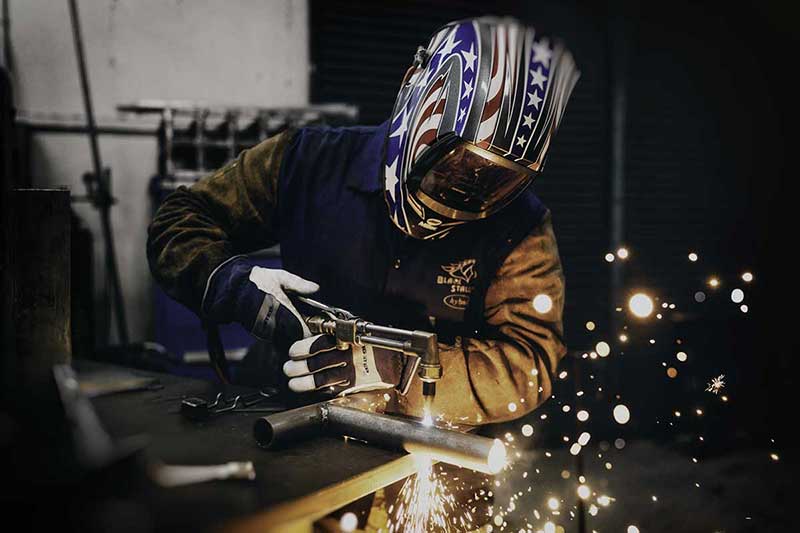MIG (Metal Inert Gas) and TIG (Tungsten Inert Gas) are both welding techniques, and gloves used for each of them have some differences.
MIG gloves are typically made of heavy-duty materials, such as leather or aluminized material, to protect the welder’s hands from the heat, sparks, and spatter generated during MIG welding. They also typically have a longer cuff to provide additional protection to the wrist and lower arm.
TIG gloves, on the other hand, are usually made of thin, flexible materials such as goatskin or cowhide. This is because TIG welding requires a high level of dexterity and sensitivity to the torch, and the gloves must be thin enough to allow the welder to feel the torch and work with precision. TIG gloves typically have a shorter cuff and are less heat-resistant than MIG gloves, as TIG welding generates less spatter and heat than MIG welding.
Types of MIG gloves
Table of Contents
There are several types of MIG gloves available, each with different features and designs. Here are some of the most common types:
- Leather MIG gloves: Made from high-quality leather, these gloves offer excellent protection from heat, sparks, and spatter. They are durable and long-lasting, making them ideal for heavy-duty welding.
- Aluminized MIG gloves: Made from aluminized material, these gloves reflect heat away from the welder’s hands, making them ideal for high-heat welding applications. They are also lightweight and flexible, allowing for a high level of dexterity.
- Split leather MIG gloves: Made from split leather, these gloves are more affordable than full-grain leather gloves. They offer good protection and durability, making them a popular choice for welding enthusiasts and hobbyists.
- Welders gloves with additional padding: These gloves offer extra protection in the form of padding in high-wear areas, such as the palms and fingertips. They are ideal for welding applications that require a lot of hand movement, as the padding reduces the risk of injury and discomfort.
- String-knit MIG gloves: Made from a combination of materials, including cotton, polyester, and other synthetic fibers, these gloves are lightweight and comfortable. They are ideal for welding applications that require a high level of dexterity, as they offer good flexibility and sensitivity to the welder’s hands.
Types of TIG gloves
There are several types of TIG gloves available, each designed to meet the specific needs of TIG welding. Here are some of the most common types:
- Goatskin TIG gloves: Made from soft and flexible goatskin leather, these gloves offer excellent dexterity and sensitivity to the welder’s hands. They are ideal for TIG welding applications that require precision and control.
- Cowhide TIG gloves: Made from durable and heat-resistant cowhide leather, these gloves offer good protection from heat, sparks, and spatter. They are ideal for TIG welding applications that generate a moderate amount of heat.
- Split leather TIG gloves: Made from split leather, these gloves are more affordable than full-grain leather gloves. They offer good protection and durability, making them a popular choice for welding enthusiasts and hobbyists.
- Kevlar TIG gloves: Made from heat-resistant Kevlar material, these gloves offer excellent protection from heat and sparks. They are ideal for TIG welding applications that generate a high amount of heat.
- String-knit TIG gloves: Made from a combination of materials, including cotton, polyester, and other synthetic fibers, these gloves are lightweight and comfortable. They are ideal for TIG welding applications that require a high level of dexterity, as they offer good flexibility and sensitivity to the welder’s hands.
In summary, MIG gloves are designed for heavy-duty welding and provide more protection, while TIG gloves are designed for precision welding and provide more dexterity.

